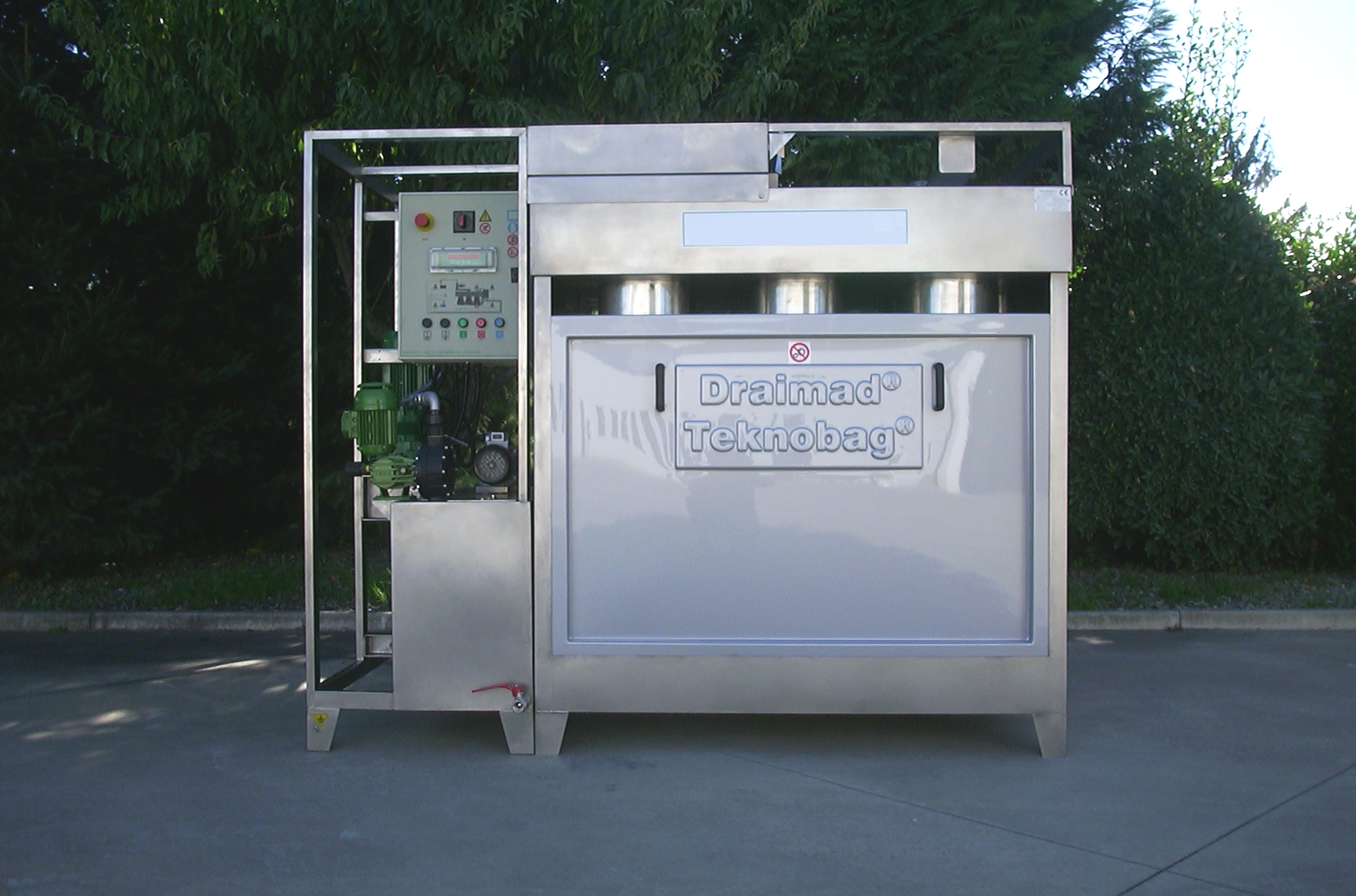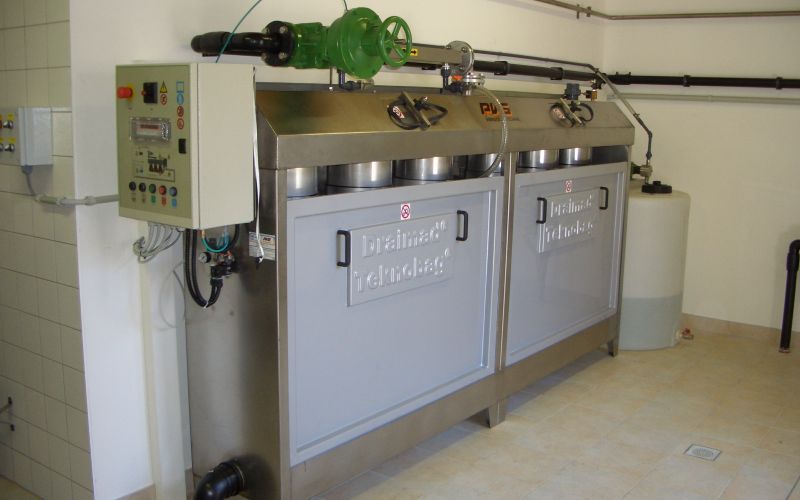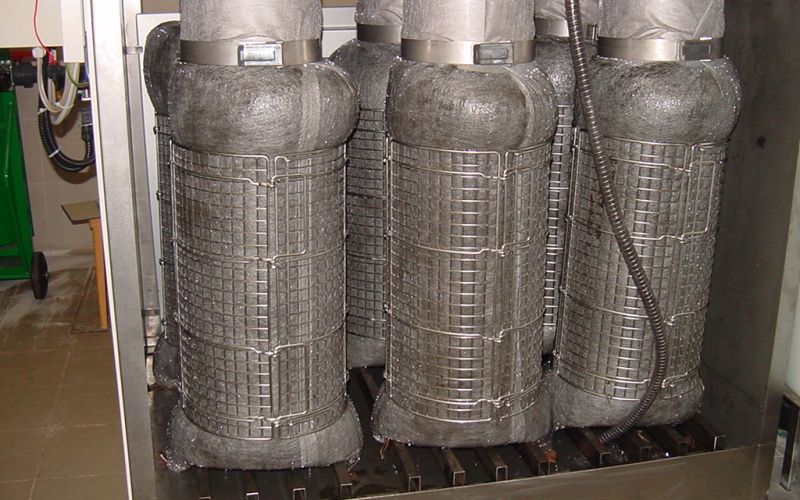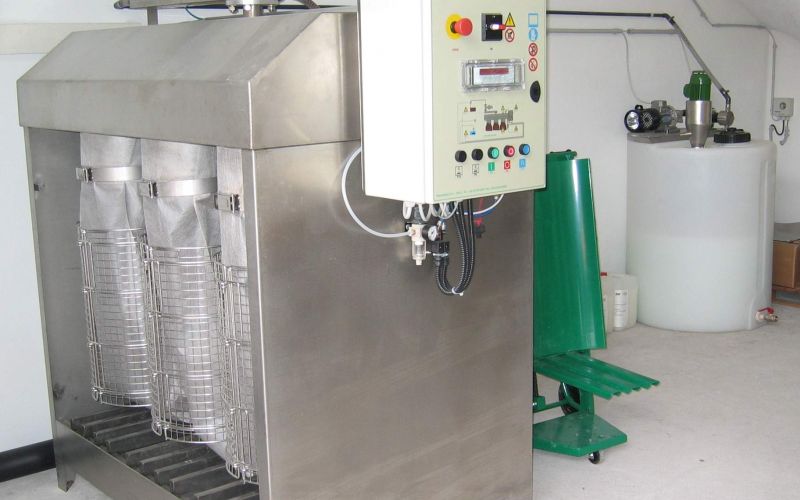Automated Filtration Sack Dewatering
With the Automated Filtration Sack Dewatering System, sludges from municipal and industrial sewage treatment plants can be easily dewatered and packaged at the same time.
The heart of the system is a disposable filter bag, which is made from a special water-repellent fabric (fleece). A number of stainless-steel filling modules are available for the sensible use of the filter bags. An electronic control monitors the filling process and the other system processes.
Functionality
As with other systems, the sludge to be dewatered must be treated with a flocculant. A few hours after the filling process has ended, depending on the type of sludge, the proportion of dry matter can be between 12 and 30 percent. The amount of sludge processed depends on the solids content: With a dry matter content of one percent, for example, up to 20 m³ / d can be handled. At the end of the first drainage phase, the sacks are closed and transported to the outside on a special hand truck with a lifting device.
During this second dewatering phase, the sludge continuously loses weight and volume, largely regardless of the atmospheric conditions. The water-repellent fabric does not let rain in but allows natural moisture reduction through evaporation. After two months of storage, the proportion of dry matter can be between 50 and 90 percent depending on the sludge.
The filter bag is also a robust packaging, insensitive to acids, alkalis, insects and bacteria. The tissue is not biodegradable but can be burned without hesitation. The filled bags are disposed of in a landfill or in the waste incinerator. The affordable filter bag drainage system reduces disposal costs and pays for itself quickly.
The filling modules are available for use with two, three, six and twelve filter bags, parallel connection of individual modules is possible. The modules can be controlled manually or automatically. The filtration is carried out by gravity and is supported by compressed air in the automatic models.
Functionality
- Inexpensive system
- Reduction of disposal costs
- Fast payback rate
- Compact installation dimensions
- Little need for space
- Automatic operation of the filling modules
- Optimal capacity utilization through preprogramed batches
- Adaptation to sludge properties by varying the batches



